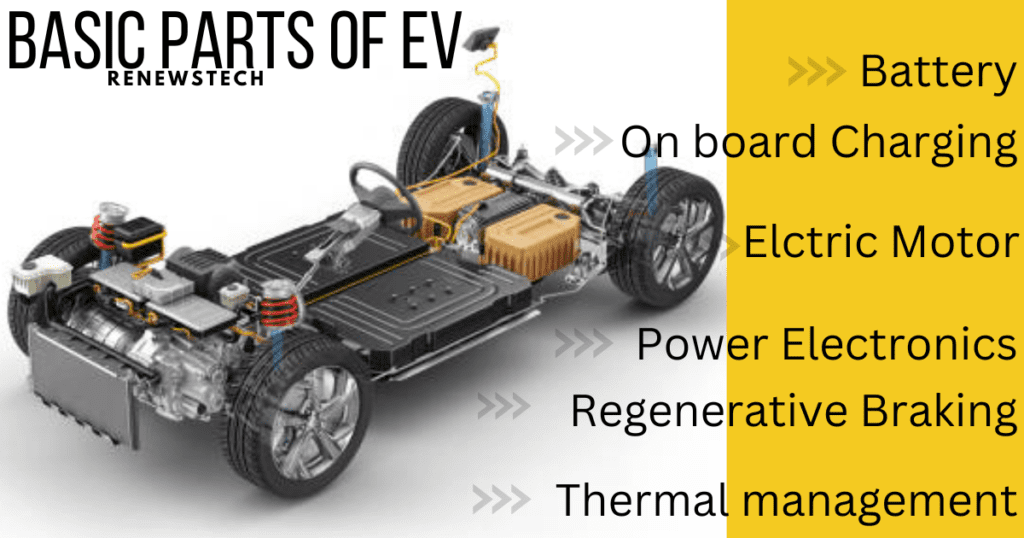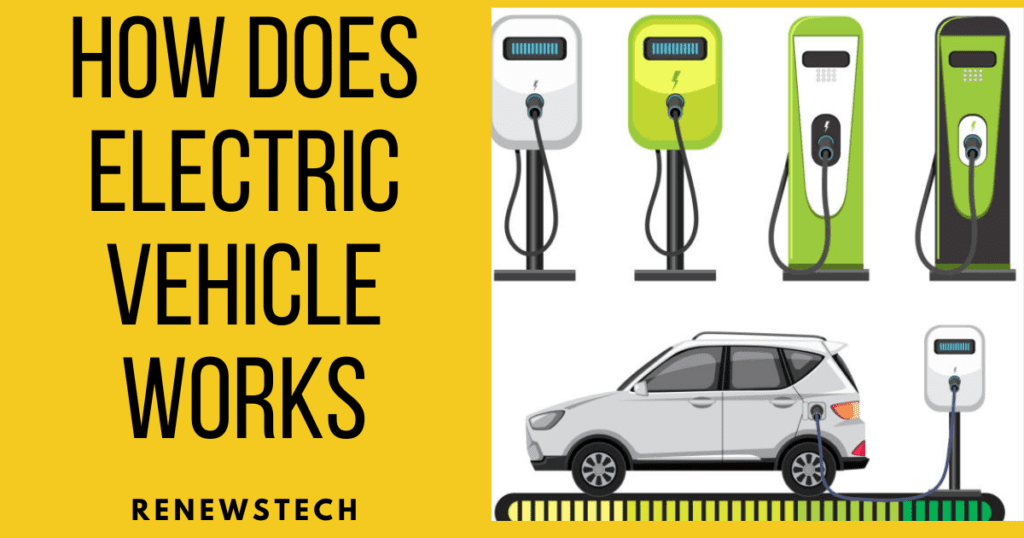How EV differently works than traditional vehicles:
An electric vehicle (EV) refers to a type of vehicle that is propelled by one or more electric motors,
using electrical energy stored in rechargeable batteries or fuel cells, instead of an internal
combustion engine that relies on fossil fuels. EVs are available in different configurations, including
all-electric vehicles (AEVs) that solely use electric motors and batteries for propulsion, and plug-in
hybrid electric vehicles (PHEVs), which have an electric motor, an internal combustion engine, and a
battery that can be charged externally.
Electric vehicles are considered more environment friendly than traditional vehicles, as these EV
doesn’t emit greenhouse gases and air pollutants. In addition, they typically have lower operating
costs, since the cost of electricity is generally lower than that of gasoline or diesel fuel. However,
they may have higher initial costs, depending on the model and the availability of incentives and
subsidies. Now lets know how it works.
![]()
![]()
![]()
![]()
![]()
How does Electric vehicle work?
Electric vehicles (EVs) use electric motors to drive the wheels of the vehicle, rather than an internal
combustion engine that runs on gasoline or diesel. The electric motor is powered by a battery or fuel
cell, which is installed onboard the vehicle and stores electricity.
When the driver presses the accelerator pedal, the motor receives an electric signal that causes it to
rotate the wheels and move the vehicle forward. The amount of electricity sent to the motor is
regulated by the power electronics in the vehicle, which control the motor’s speed and torque.
EVs can be recharged by connecting them to a charging station, a wall outlet, or a specialized EV
charging unit. The time required for charging depends on the battery’s capacity and the charging
rate, which can range from a few hours to several hours for a full charge.
EVs also have a regenerative braking system that captures some of the energy produced when the
vehicle slows down or comes to a stop and uses it to recharge the battery. This technology helps
improve the vehicle’s efficiency and increase its driving range.
Overall, while the basic operation of an EV is similar to a traditional vehicle, the key difference is the
use of an electric motor powered by a battery or fuel cell instead of an internal combustion engine.
This offers benefits such as reduced emissions, improved fuel efficiency, and quieter operation.
![]()
![]()
![]()
![]()
![]()
What are the basic parts of an electric vehicle (EV)?
Battery: This is the most critical component of an electric vehicle. We can say battery is the heart of
EV. It stores the electricity needed to power the electric motor. The battery is usually made up of
multiple cells that are connected in series or parallel to achieve the required voltage and capacity.


Electric Motor: An electric motor is used to drive the wheels of an EV. It converts electrical energy
from the battery into mechanical energy to move the vehicle. EVs may have one or more electric
motors depending on their design and power requirements.
Power Electronics: Power electronics is a system that controls the flow of electrical power between
the battery, the electric motor, and other components of the EV. Power electronics contains the
diodes, transistors, thyristors for energy conversion and energy level changing purpose. It manages
the voltage and current to ensure optimal performance and efficiency.
On-board Charger: An on-board charger is used to convert AC power from an external power source
(such as a charging station) into DC power that can be stored in the battery. It is usually integrated
into the vehicle and can be AC or DC, depending on the type of EV.
Thermal Management System: The thermal management system is used to regulate the
temperature of the battery and other components of the EV. Heat sinks can be used for this system.
Thermal management is important because extreme temperatures can damage the battery and
other electronic components reduce its efficiency.
Regenerative Braking System: A regenerative braking system is used to capture some of the kinetic
energy generated during braking and convert it into electrical energy, which is stored in the battery.
This helps to extend the driving range of the vehicle and increase its efficiency.
Accessories: Accessories such as air conditioning, heating, lighting, and audio systems are also
present in an EV, but they are powered by the battery instead of the engine. They may have
different power requirements and be optimized for energy efficiency to maximize the driving range
of the vehicle.
![]()
![]()
![]()
![]()
![]()
Conclusion:
Electric Vehicles Industry is the future Auto Industry. As conventional fuel sources are rapidly
depleting, we need to find the alternative for that and EV is the option in Auto industry.
EVs offer many advantages over traditional vehicles, such as reduced emissions, improved fuel
efficiency, and quieter operation. While EVs may have higher upfront costs, they typically have lower
operating costs and can provide significant long-term savings. As technology advances and battery
costs continue to decrease, EVs are expected to become more affordable and more widely adopted,
helping to reduce greenhouse gas emissions and mitigate the impacts of climate change.
FAQs :
Q.1 can EV works without combustion engine?
Ans: Yes, EV works with one or more electric motors
Q.2 Does EV runs like normal Vehicle?
Ans: Yes, EV works similar to traditional vehicle.
Q.3 Does EV needs Fuel?
Ans: No EV works on electric motor so EV needs electric supply to work
Q.4 How can Supply EV?
Ans: With the help of rechargeable battery storage system.







